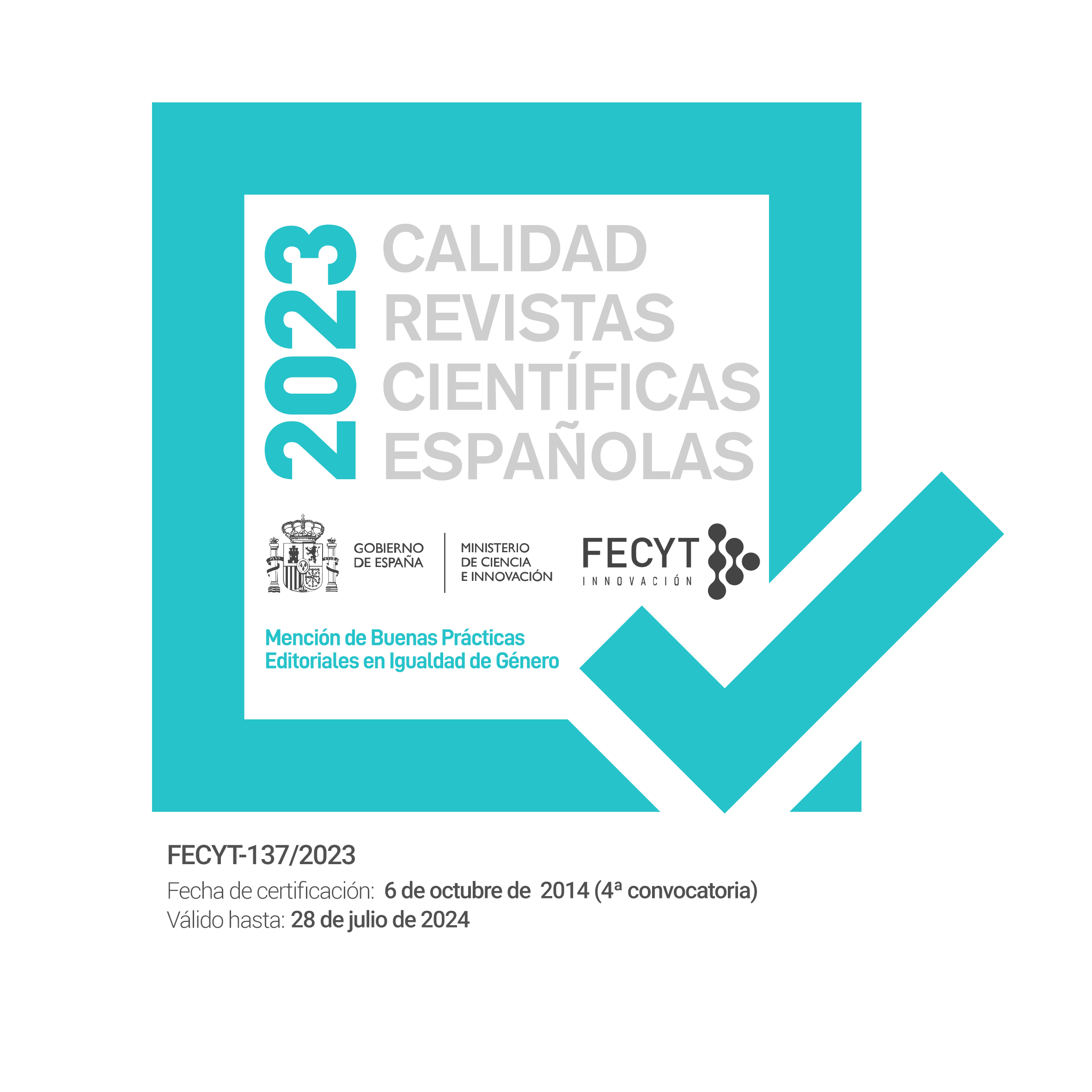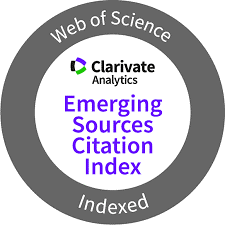El papel de los influencers en las decisiones de consumo de los menores españoles
DOI:
https://doi.org/10.31921/doxacom.n36a1685Palabras clave:
Adolescentes e influencers, consumo e influencers, relación parasocial, credibilidad, redes socialesResumen
En un contexto donde el marketing de influencia crece, es relevante cuestionarse por el rol que juegan los influencers en las decisiones de consumo de los menores. La especial cercanía que estos creadores de contenido son capaces de generar con sus seguidores, puede establecer un marco de credibilidad que se extienda también a sus publicaciones con fines comerciales. Desde una perspectiva cualitativa y mediante la realización de 12 grupos focales se planteó ahondar en la relación entre influencers y menores en España con el fin de conocer la percepción y el imaginario de los adolescentes sobre su relación con los influencers y las implicaciones comerciales que dicha relación supone. Los hallazgos del estudio desvelan que el vínculo desarrollado entre el menor y el influencer incide directamente en el nivel de credibilidad otorgado a las publicaciones comerciales, algo que depende directamente del tipo de influencer; los menores no rechazan las colaboraciones comerciales del influencer siempre y cuando el contenido resultante sea útil o entretenido y guarde una conexión con la profesión o el estilo de vida del creador de contenido que lo promocione. Por otra parte, los más pequeños, a diferencia de los adolescentes, demandan una interacción con sus referentes.
Descargas
Citas
Audrezet, A., de Kerviler, G., & Moulard, J. G. (2020). Authenticity under threat: When social media influencers need to go beyond self-presentation. Journal of business research, 117, 557-569. https://doi.org/10.1016/j.jbusres.2018.07.008
Berríos Valenzuela, L., & Buxarrais Estrada, M. R. (2015). Educación para el consumo: aproximación empírica a los hábitos de consumo del alumnado de secundaria. Actualidades Investigativas en Educación, 15(1), 449-473. https://doi.org/10.15517/aie.v15i1.16969
Bringué, X. (2012). Publicidad infantil y estrategia persuasiva: un análisis de contenido. ZER: Revista De Estudios De Comunicación = Komunikazio Ikasketen Aldizkaria, 6(10). https://doi.org/10.1387/zer.6104
Brown, D., & Hayes, N. (2008). Influencer marketing. Routledge. https://doi.org/10.4324/9780080557700
Carlson, L., Grossbart, S., & Walsh, A. (1990). Mothers' communication orientation and consumer-socialization tendencies. Journal of Advertising, 19(3), 27-38. https://doi.org/10.1080/00913367.1990.10673190
Djafarova, E., & Rushworth, C. (2017). Exploring the credibility of online celebrities' Instagram profiles in influencing the purchase decisions of young female users. Computers in human behavior, 68, 1-7. https://doi.org/10.1016/j.chb.2016.11.009
Feijoo, B., & Sádaba, C. (2022). When Ads Become Invisible: Minors’ Advertising Literacy While Using Mobile Phones. Media and Communication, 10(1), 339-349. https://doi.org/10.17645/mac.v10i1.4720
Feng, Y., Chen, H., & Kong, Q. (2021). An expert with whom i can identify: the role of narratives in influencer marketing. International Journal of Advertising, 40(7), 972-993. https://doi.org/10.1080/02650487.2020.1824751
Ferchaud, A., Grzeslo, J., Orme, S., & LaGroue, J. (2018). Parasocial attributes and YouTube personalities: Exploring content trends across the most subscribed YouTube channels. Computers in Human Behavior, 80, 88-96. https://doi.org/10.1016/j.chb.2017.10.041
Gómez, G. R., Flores, J. G., & Jiménez, E. G. (1996). Metodología de la investigación cualitativa. Málaga: Ediciones Aljibe, 378.
Hartmann, T. (2008). Parasocial Interactions and Paracommunication with New Media Characters. En Konijn, E., Utz, S., Tanis, M. & Barne, S. (eds.): Mediated Interpersonal Communication (pp. 177-199). New York: Routledge. https://doi.org/10.4324/9780203926864
Hoffner, C., & Cantor, J. (1991). Perceiving and responding to mass media characters. Responding to the screen: Reception and reaction processes, 1, 63-101.
HORTON, D., & WOHL, R. (1956). Mass communication and para-social interaction; observations on intimacy at a distance. Psychiatry, 19(3), 215-229. https://doi.org/10.1080/00332747.1956.11023049
Hudders, L., Pauw, P. D., Cauberghe, V., Panic, K., Zarouali, B., & Rozendaal, E. (2017). Shedding new light on how advertising literacy can affect children's processing of embedded advertising formats: A future research agenda. Journal of Advertising, 46, 333-349. https://doi.org/10.1080/00913367.2016.1269303
Hudders, L., De Jans, S., & De Veirman, M. (2021). The commercialization of social media stars: a literature review and conceptual framework on the strategic use of social media influencers. International Journal of Advertising, 40(3), 327-375. https://doi.org/10.1080/02650487.2020.1836925
Hudders, L., Van Reijmersdal, E. A., & Poels, K. (2019). Digital advertising and consumer empowerment. Cyberpsychology: Journal of Psychosocial Research on Cyberspace, 13(2). https://doi.org/10.5817/CP2019-2-xx
Jin, S. V., & Ryu, E. (2020). “I'll buy what she's# wearing”: The roles of envy toward and parasocial interaction with influencers in Instagram celebrity-based brand endorsement and social commerce. Journal of Retailing and Consumer Services, 55, 102121. https://doi.org/10.1016/j.jretconser.2020.102121
Knoll, J., Schramm, H., Schallhorn, C., & Wynistorf, S. (2015). Good guy vs. bad guy: The influence of parasocial interactions with media characters on brand placement effects. International Journal of Advertising, 34(5), 720-743. https://doi.org/10.1080/02650487.2015.1009350
Lim, X. J., Radzol, A. M., Cheah, J., & Wong, M. W. (2017). The impact of social media influencers on purchase intention and the mediation effect of customer attitude. Asian Journal of Business Research, 7(2), 19-36. https://doi.org/10.14707/ajbr.170035.
Lou, C., & Yuan, S. (2019). Influencer marketing: how message value and credibility affect consumer trust of branded content on social media. Journal of Interactive Advertising, 19(1), 58-73. https://doi.org/10.1080/15252019.2018.1533501
Lowe-Calverley, E., & Grieve, R. (2021). Do the metrics matter? An experimental investigation of Instagram influencer effects on mood and body dissatisfaction. Body Image, 36, 1-4. https://doi.org/10.1016/j.bodyim.2020.10.003
Martí-Parreño, J., Sanz-Blas, S., Ruiz-Mafé, C. & Aldás-Manzano, J. (2013). Key factors of teenagers' mobile advertising acceptance. Industrial Management & Data Systems, 113(5), 732-749. https://doi.org/10.1108/02635571311324179
Martí-Pellón, D. & Saunders, P. (2015). Children’s exposure to advertising on games sites in Brazil and Spain. Comunicar, 45, 169-177. https://doi.org/10.3916/C45-2015-18
Martínez, C. (2019). The struggles of everyday life: How children view and engage with advertising in mobile games. Convergence, 25(5-6), 848-867. https://doi.org/10.1177/1354856517743665
Martínez, C., Jarlbro, G. & Sandberg, H. (2013). Children’s views and practices regarding online advertising. Nordicom Review, 34(2), 107-122. https://doi.org/10.2478/nor-2013-0057
McNeal, J. U. (1992). Kids as customers: A handbook of marketing to children. Lexington books.
Meyers, C. B. (2017). Social media influencers: A lesson plan for teaching digital advertising media literacy. Advertising & Society Quarterly, 18(2). https://doi.org/10.1353/asr.2017.0018
Morgan, D. L., & Krueger, R. A. (1998). The focus group guidebook. Sage.
Quijandría, E. (2020). Análisis de publicidad nativa en redes sociales y su influencia en el branding.
Redmarka. Revista de Marketing Aplicado, 24(1), 17-37. https://doi.org/10.17979/redma.2020.24.1.5839
Salgado Carrión, J. A. (2006). La presencia de la televisión en los hábitos de ocio de los niños. Fundación Autor.
Sanchez, M. (2021). Estudio InfoAdex de la Inversión Publicitaria en España 2021. INFOADEX. https://is.gd/GMKFfM
Sheth, J. N. (2020). Borderless Media: Rethinking International Marketing. Journal of International Marketing, 28(1), 3-12. https://doi.org/10.1177/1069031X19897044
Silva, M. D. B., Farias, S. A., Grigg, M. H., & Barbosa, M. L. (2021). The body as a brand in social media: analyzing digital fitness influencers as product endorsers. Athenea Digital, 21(1), 1-34. https://doi.org/10.5565/rev/athenea.2614
De Veirman, M., Cauberghe, V., & Hudders, L. (2017). Marketing through Instagram influencers: the impact of number of followers and product divergence on brand attitude. International journal of advertising, 36(5), 798-828. https://doi.org/10.1080/02650487.2017.1348035
Descargas
Publicado
Cómo citar
Número
Sección
Licencia
Derechos de autor 2022 Luisa Zozaya, Beatriz Feijoo Fernández, Charo Sádaba Chalezquer

Esta obra está bajo una licencia internacional Creative Commons Atribución-NoComercial 4.0.



























